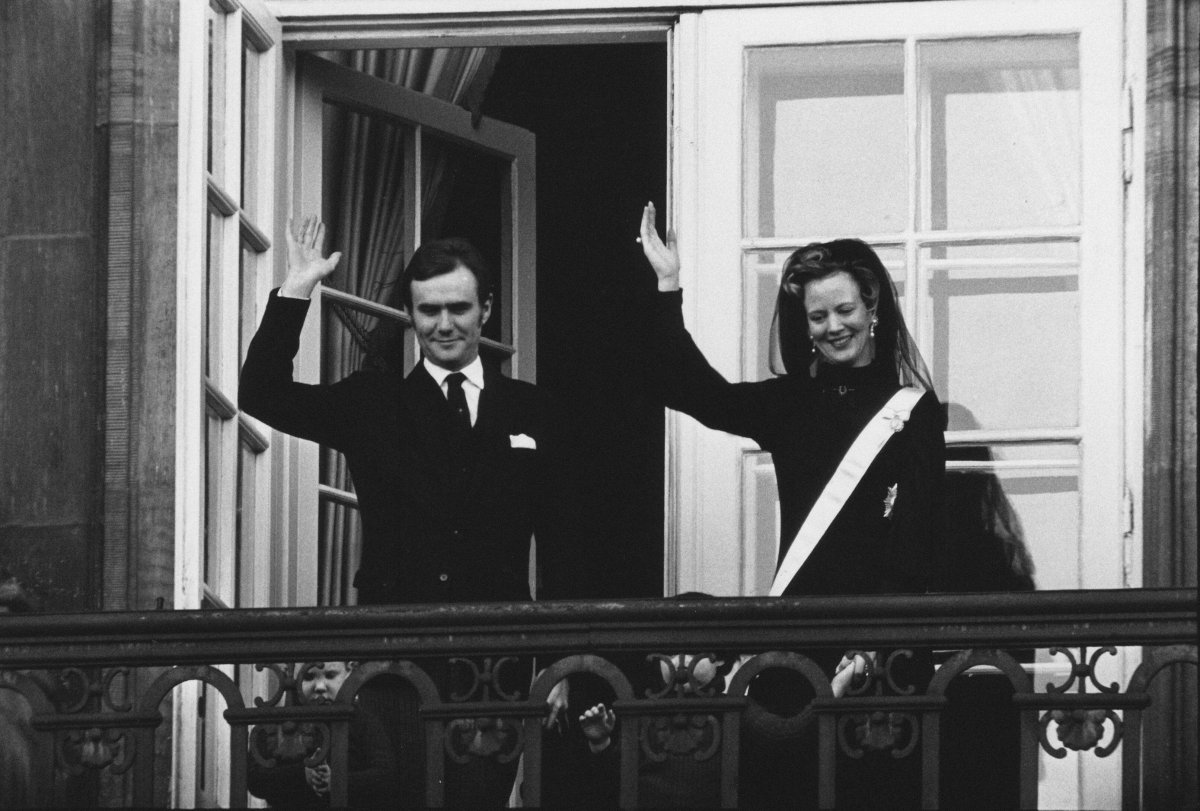
Our bejeweled journey through three of the most important days of Queen Margrethe II of Denmark’s life and reign continues today with a particularly pivotal moment: the day of her proclamation as Queen in 1972.
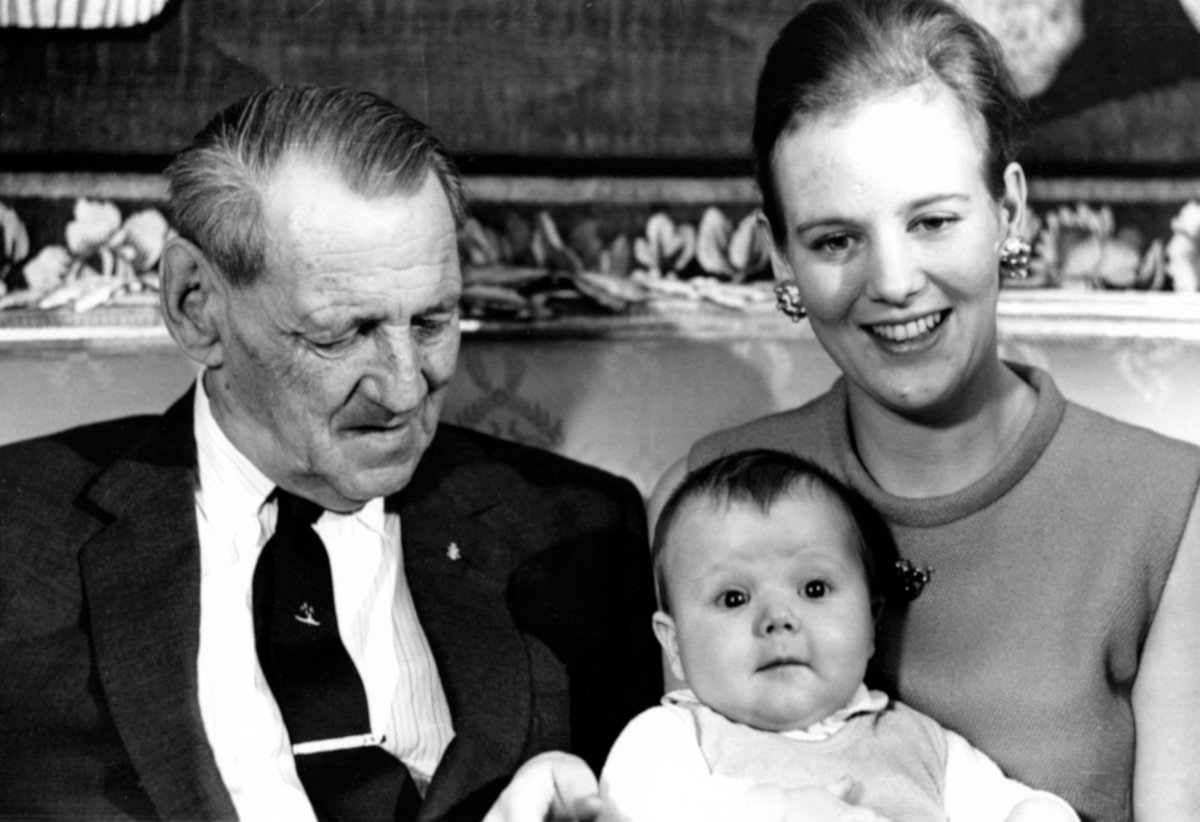
The early Christmas season in 1971 was a joyous time for the Danish royal family. Seventy-two-year-old King Frederik IX of Denmark had been on the throne for nearly 25 years. His beloved wife, 61-year-old Queen Ingrid, had just returned to Copenhagen after convalescing in the warm weather of Barbados after an operation in the autumn. Their three daughters, Crown Princess Margrethe, Princess Benedikte, and Queen Anne-Marie, were all married with children of their own. Frederik and Ingrid cherished their growing group of little grandchildren, which now included Prince Frederik (3) and Prince Joachim (2) of Denmark, Prince Gustav (2) and Princess Alexandra (1) of Sayn-Wittgenstein-Berleburg, and Princess Alexia (6), Crown Prince Pavlos (4), and Prince Nikolaos (2) of Greece.
The role of grandfather suited Frederik IX perfectly. He was loved in Denmark for his informality, famous for the big bear hugs he gave to his wife and daughters when he greeted them at the Copenhagen airport after trips abroad. When the eldest, Crown Princess Margrethe, was engaged in 1966, he personally drove her in a car through the streets of the city so that she could see the excitement of the people up close. A sometimes gruff—and heavily tattooed—sailor, King Frederik was also devoted to classical music. He delighted in conducting the Royal Opera’s orchestra each year on his birthday.
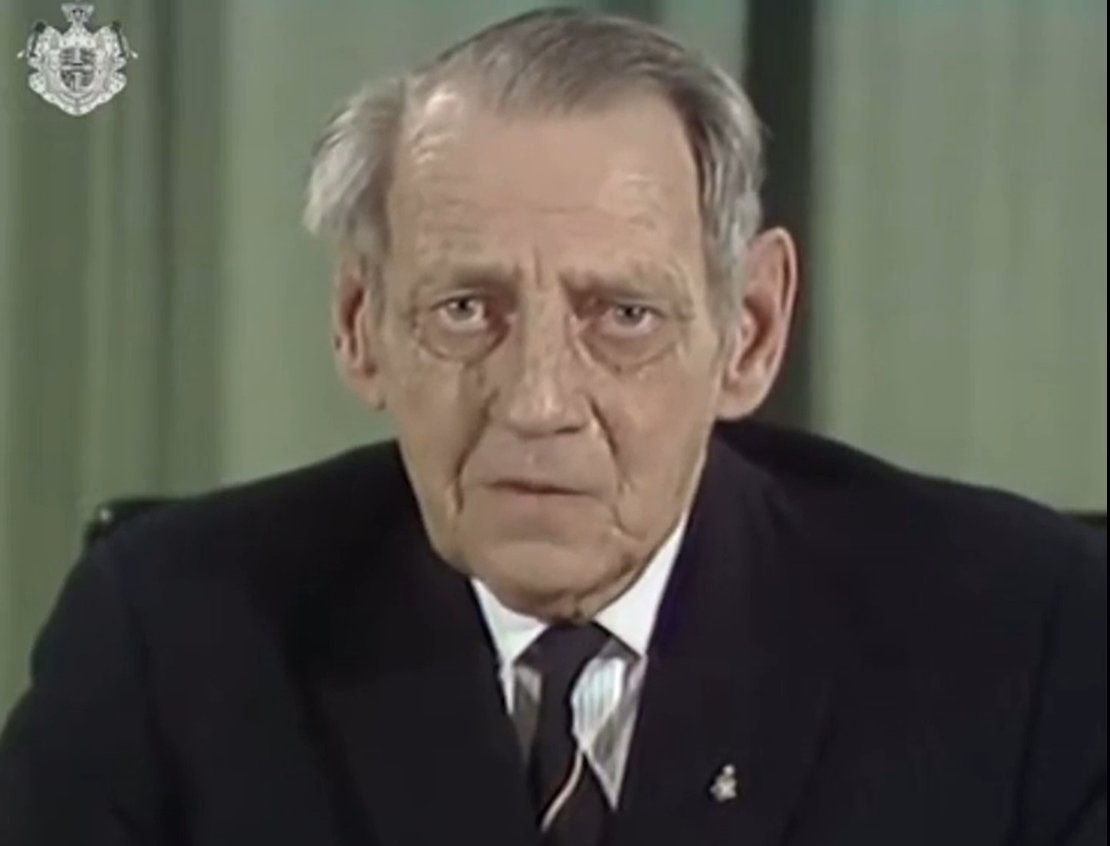
On December 31, 1971, the King delivered his traditional New Year’s address at six o’clock in the evening even though he was feeling ill. Almost immediately afterward, he headed to bed. On New Year’s Day, the Queen and the Crown Princess stepped in to represent the absent King at the traditional New Year’s Levee, and the royal court announced that palace physicians were treating the monarch at Amalienborg for influenza and the early stages of pneumonia.
At first, reports from Copenhagen were reassuring. But then, on January 3, 1972, Frederik suffered a heart attack and was rushed to the hospital. The royals hurried to be by the monarch’s side. His youngest daughter, Queen Anne-Marie, flew in from Spain to join her mother and sisters—King Constantine followed a few days later—and Crown Princess Margrethe was named regent for the duration of her father’s illness. The King’s condition stabilized, but he progressively grew weaker. On January 8, his doctors began to believe that he still might recover. But three days later, his health took a turn for the worse. He slipped into a coma and never regained consciousness. After visits from his wife, his daughters, and his sons-in-law, King Frederik IX of Denmark passed away peacefully just before eight o’clock in the evening on Friday, January 14, 1972.
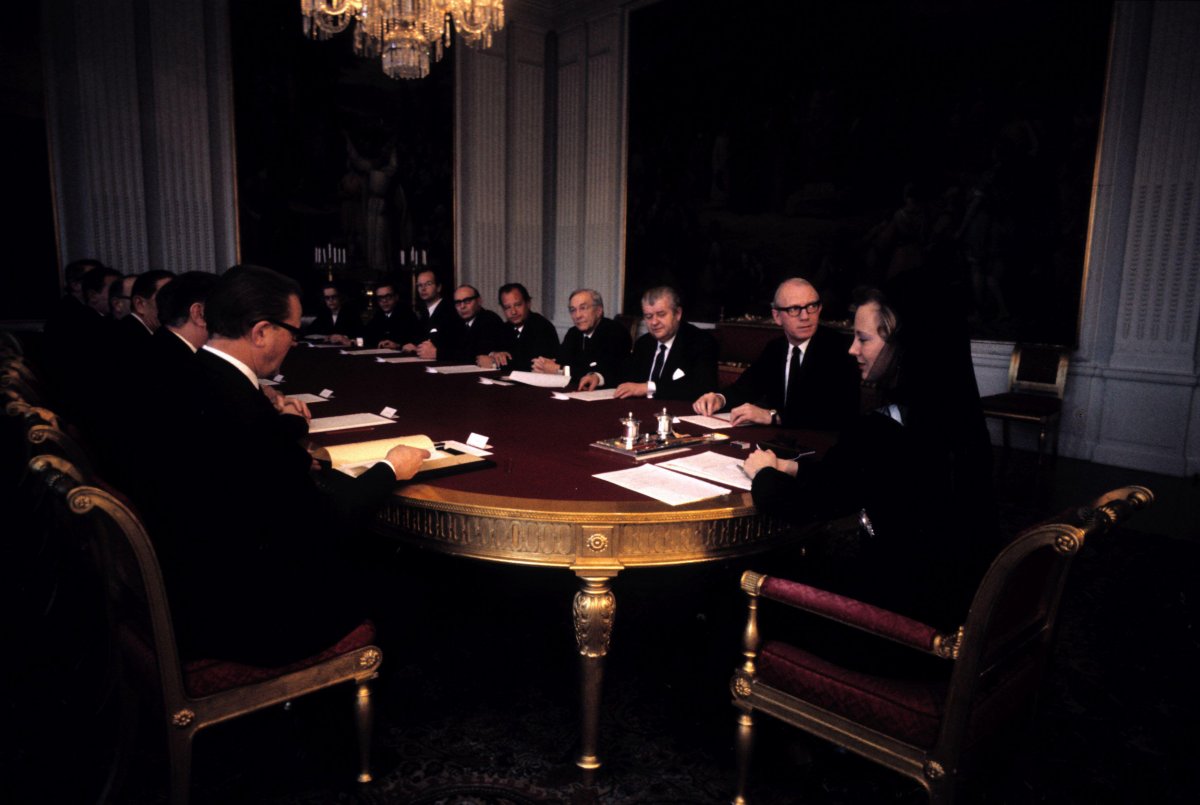
Messages of sympathy from fellow royals and family members, including Queen Elizabeth II, quickly fluttered in. But there was virtually no time for the late monarch’s eldest daughter, Margrethe, to mourn. She inherited the Danish throne at the precise moment of her father’s death. On the morning of Saturday, January 15, 1972, the new Queen of Denmark dressed in deep black mourning clothes and drove with her husband, Prince Henrik, from Amalienborg to Christiansborg Palace. There, she presided over her first meeting of the Council of State as monarch.
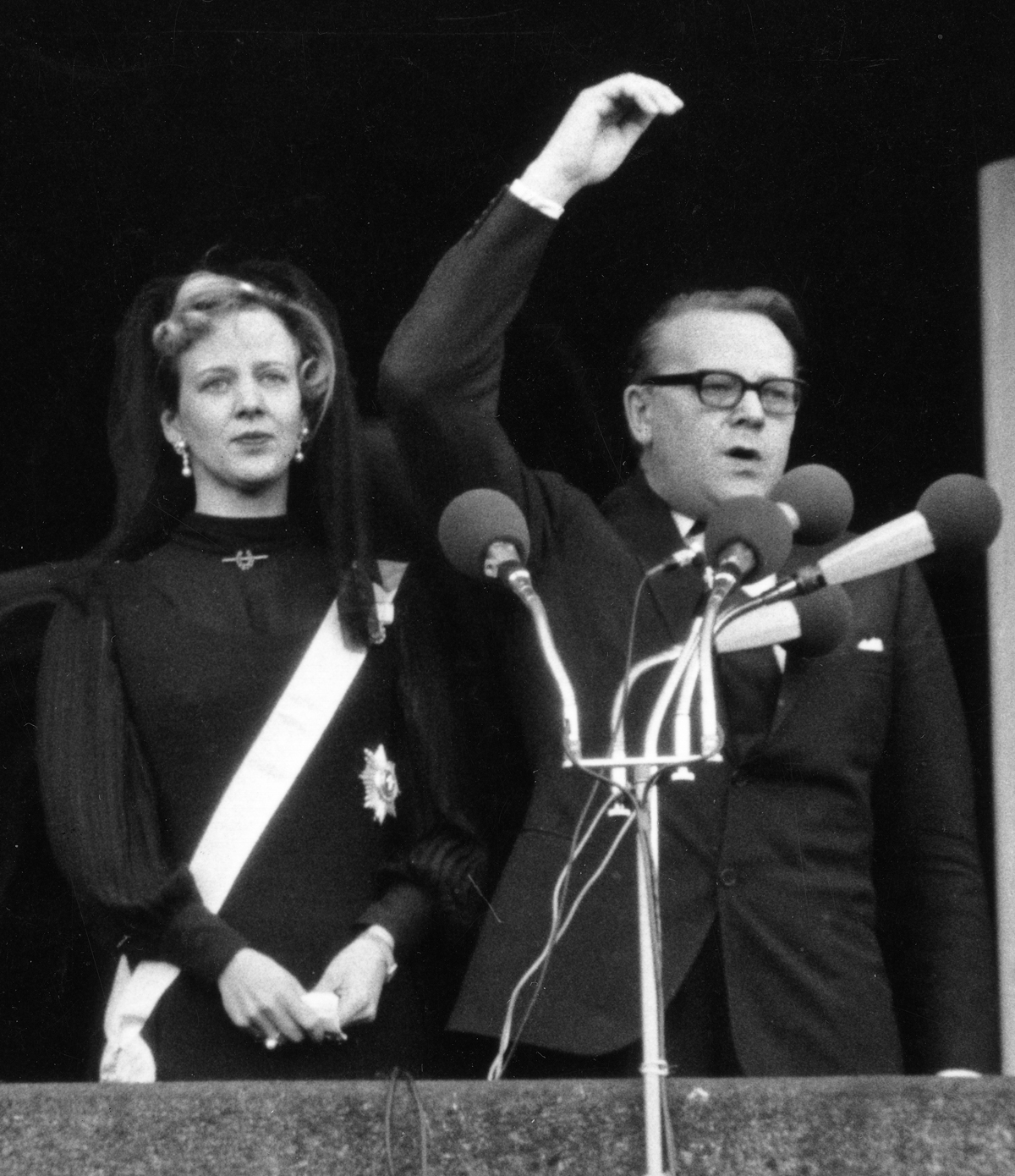
An hour later, outside of Christiansborg Palace, a crowd estimated in the hundreds of thousands gathered for a glimpse of history. The beginning of the reign of a new monarch in Denmark is marked not with a coronation but with a simple proclamation ceremony. (The last formal anointing of a Danish monarch took place in 1840.) Prime Minister Jens Otto Krag and the Queen stepped out on to the windy balcony at Christiansborg. Krag approached the microphone and said a few words about the late King. Then, he announced three times, “King Frederik IX is dead. Long live Her Majesty Queen Margrethe II!” The official announcement of the Queen’s regnal name and number was an acknowledgment of the reign of Queen Margrethe I, who was Queen of Denmark, Norway, and Sweden from the 1380s until 1412.
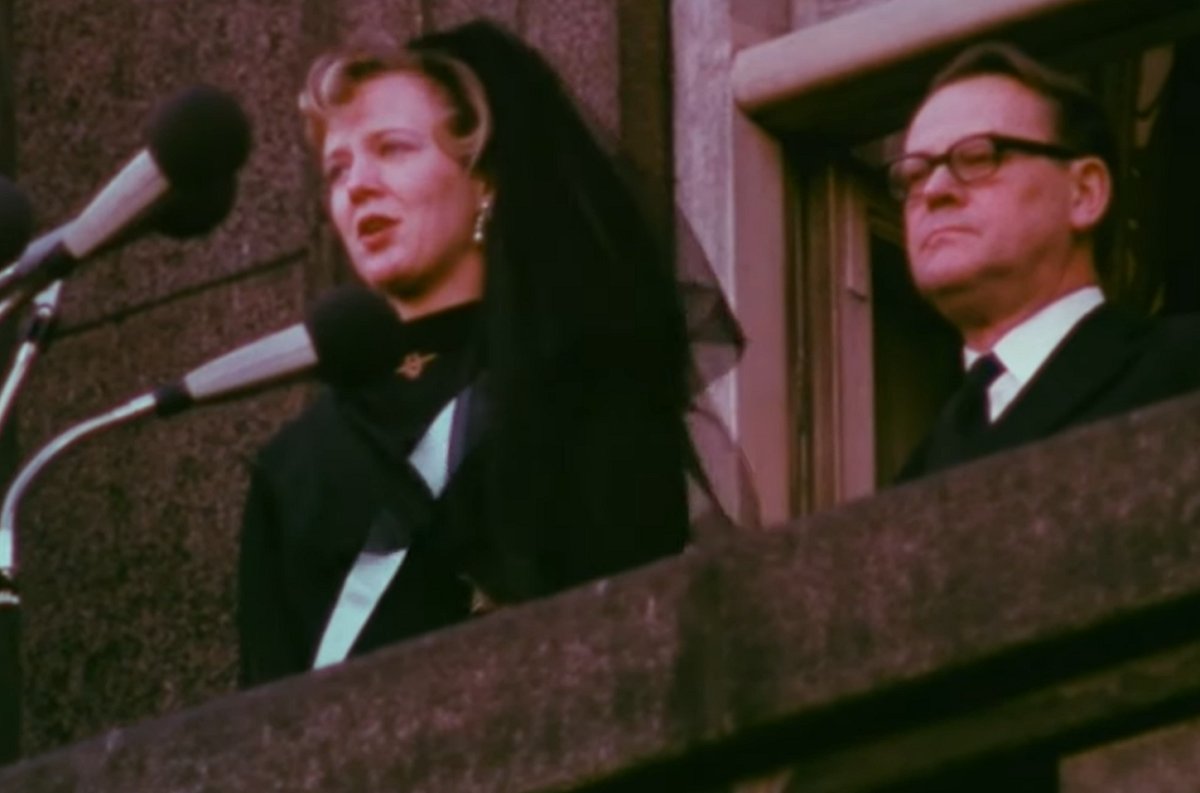
Queen Margrethe was visibly moved throughout the proclamation, especially when the crowd raised cheers for their new monarch. Then, she stepped to the microphone herself and delivered a short address to the people. “My beloved father, our king, is dead, and a great sorrow has stricken us all,” she began. “But the sorrow is greatest for my mother, Queen Ingrid, and to her our warmest thoughts go out. The task that my father carried for nearly 25 years is now resting on my shoulders. I pray to God to give me help and strength to carry the heavy inheritance.”
The heavy guns of a naval salute fired in the background as she continued, “The love and thoughtfulness which was shown him by the Danish people was a cornerstone for his work, and I hope it will also be a cornerstone for my work. May the trust that was given to my father also be granted to me.” She ended her speech with her royal motto: “The help of God. The love of the people. The strength of Denmark.” The crowd’s cheers grew even louder a moment later when Prince Henrik briefly joined her on the palace balcony.
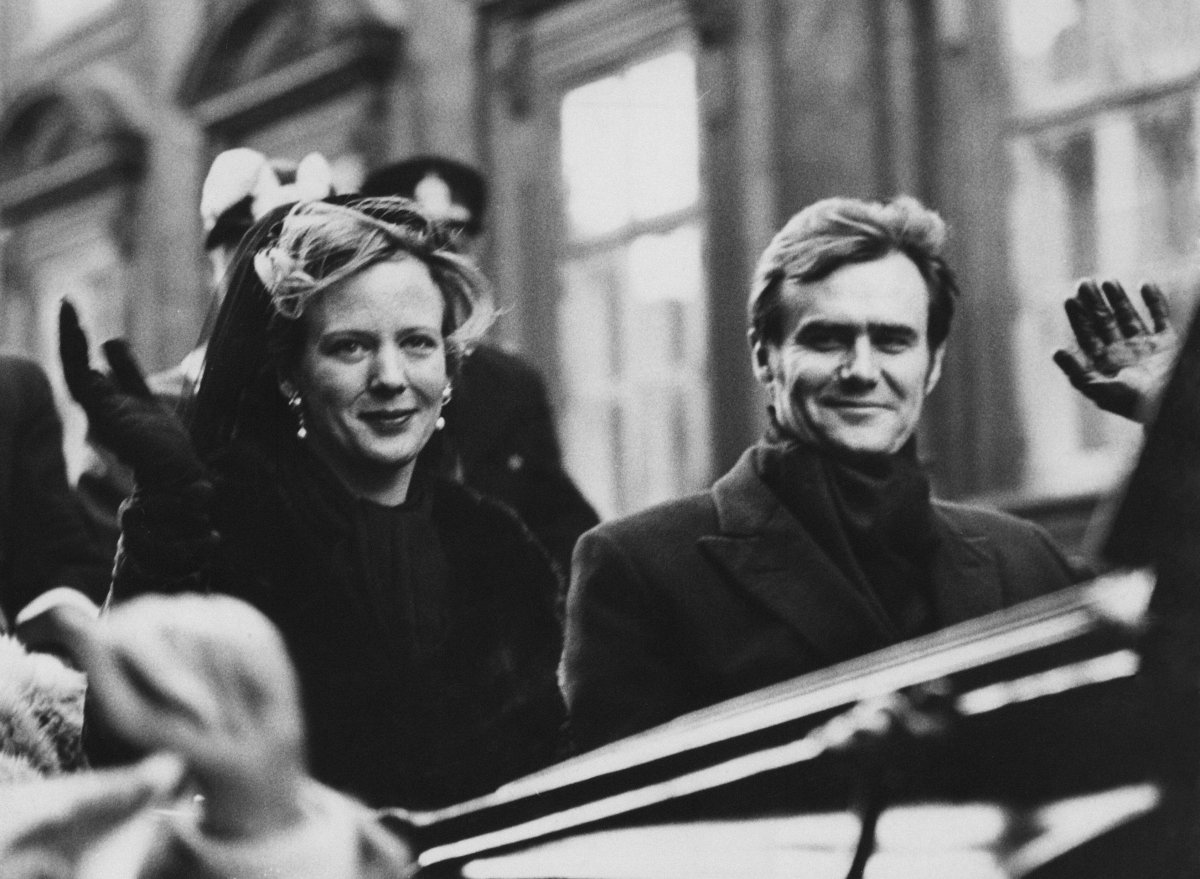
Afterward, the Queen and the Prince rode from Christiansborg Palace back to their home at Amalienborg in an open landau. During the slow procession, one Associated Press reporter noted, “Cheering Danes pressed forward almost to the wheels of the carriage.”

Back at their home in the Amalienborg complex, Christian IV’s Palace, Margrethe and Henrik made one more balcony appearance to salute the crowd below. They were joined by their two sons, three-year-old Crown Prince Frederik and two-year-old Prince Joachim. You’ll be able to spot the little faces and hands of the princes behind the wrought-iron balcony railing.
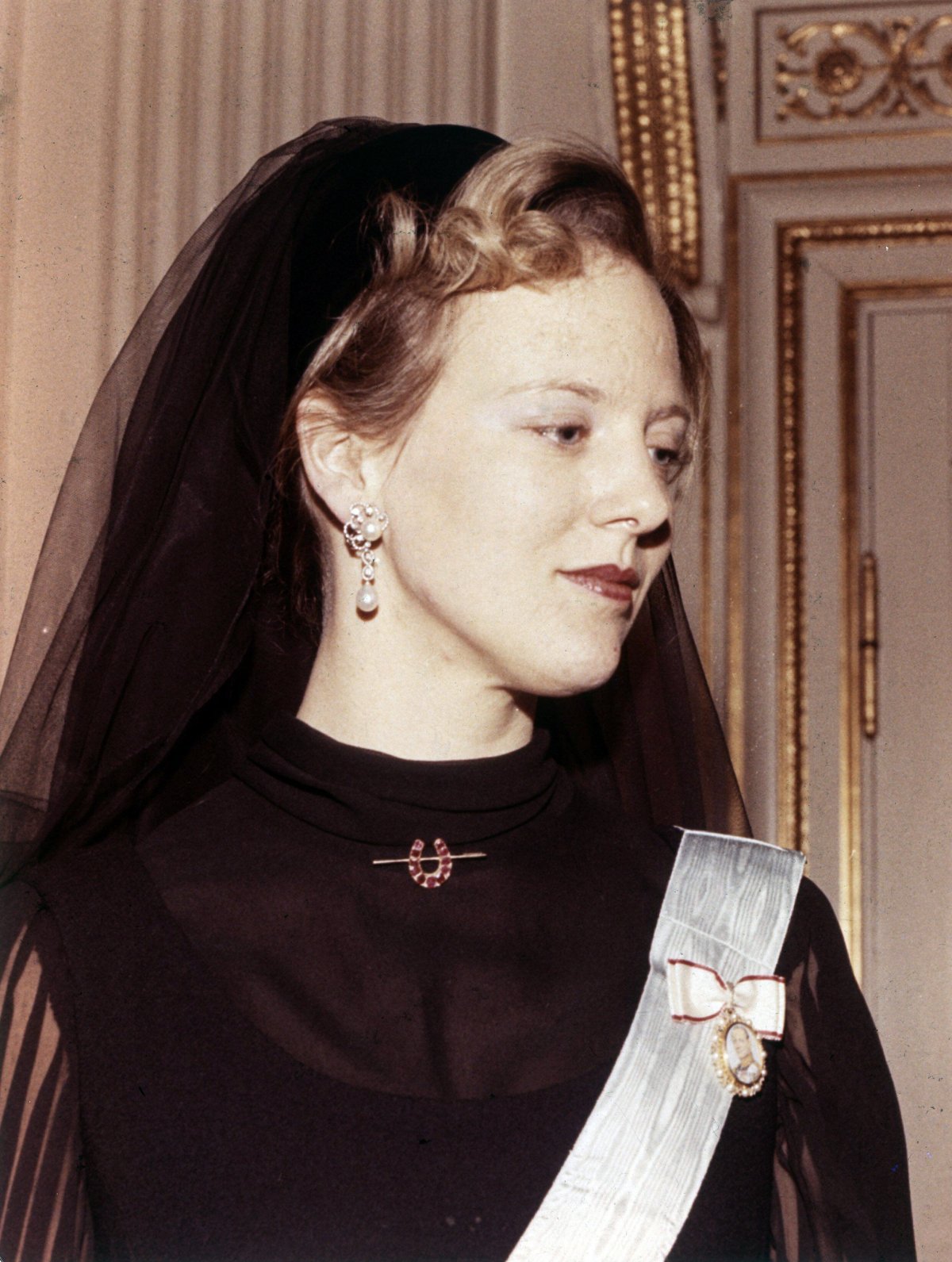
The new Queen was elegant for the proclamation ceremony in a long black gown and veil. With the dress, she wore the sash and star of Denmark’s highest order of chivalry, the Order of the Elephant. Her father’s Royal Family Order was also pinned to her order sash.
This close-up portrait from the proclamation ceremonies shows off the Queen’s special jewelry choices as well. Her earrings will look familiar, as they’re the same diamond and pearl earrings that she wore on her wedding day in 1967. They were a gift from her new husband, Prince Henrik.
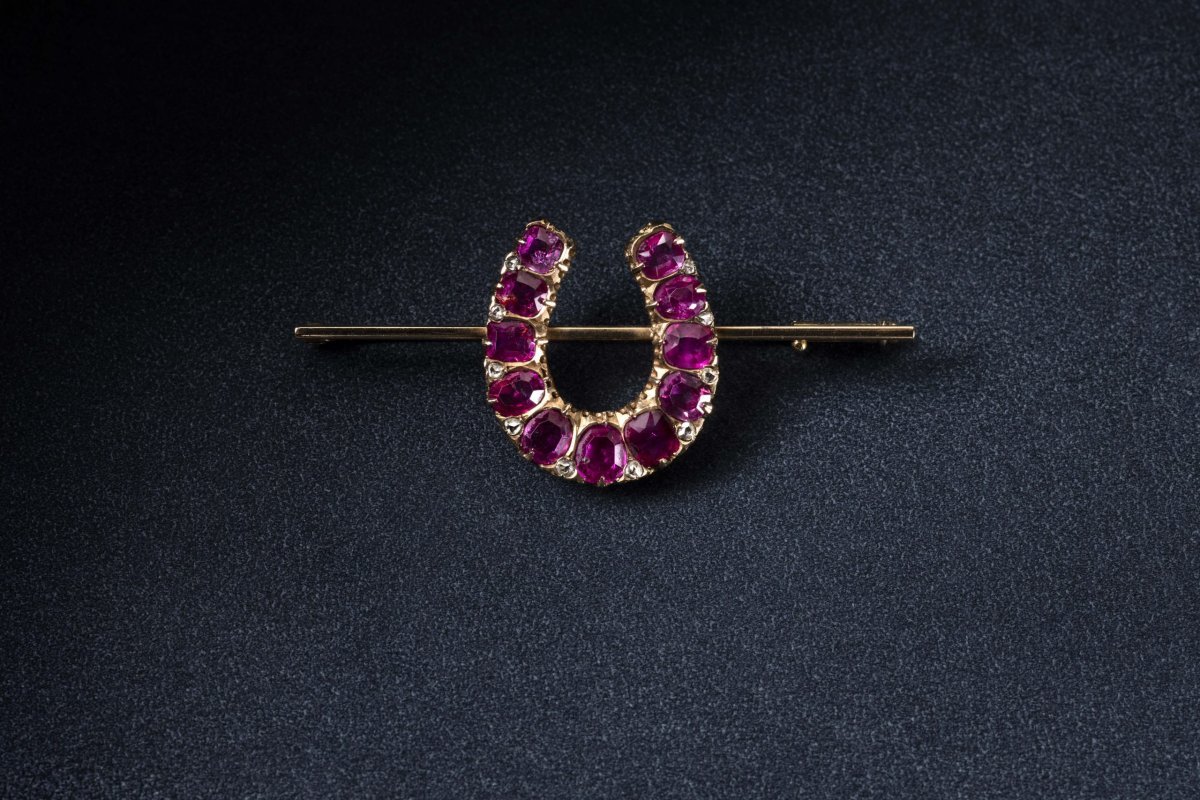
The brooch that Margrethe wore for her proclamation is an exceedingly special piece of jewelry. The small gold pin features a horseshoe design set in diamonds and rubies, echoing the red and white national colors of Denmark. The brooch was given to Margrethe by her father, King Frederik IX, on June 5, 1953. On that day, a new constitution in Denmark officially went into effect. A week earlier, on May 28, the people of Denmark had voted to change the nation’s succession laws, allowing daughters of monarchs to inherit the throne. The change made Margrethe the heir apparent, and the brooch was Frederik’s gift to his daughter to mark that moment, wishing her luck and good fortune as the future unfolded before her.
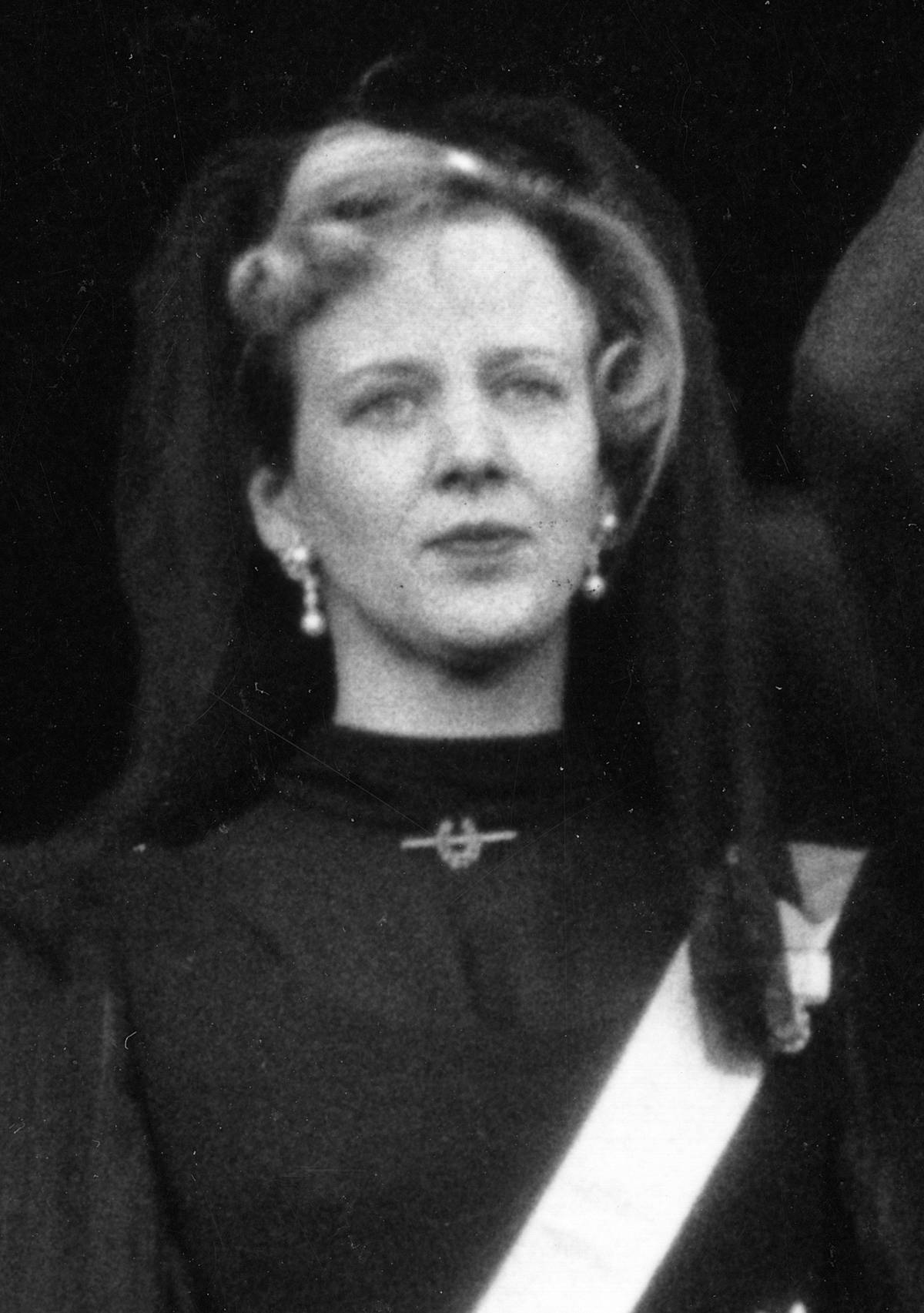
Margrethe’s jewels during the proclamation ceremony, therefore, were tokens linked to two of the most important people in her life: her late father, who had paved the way for her to follow in his footsteps as Denmark’s head of state, and her husband, who would now be her closest supporter in her new royal role.
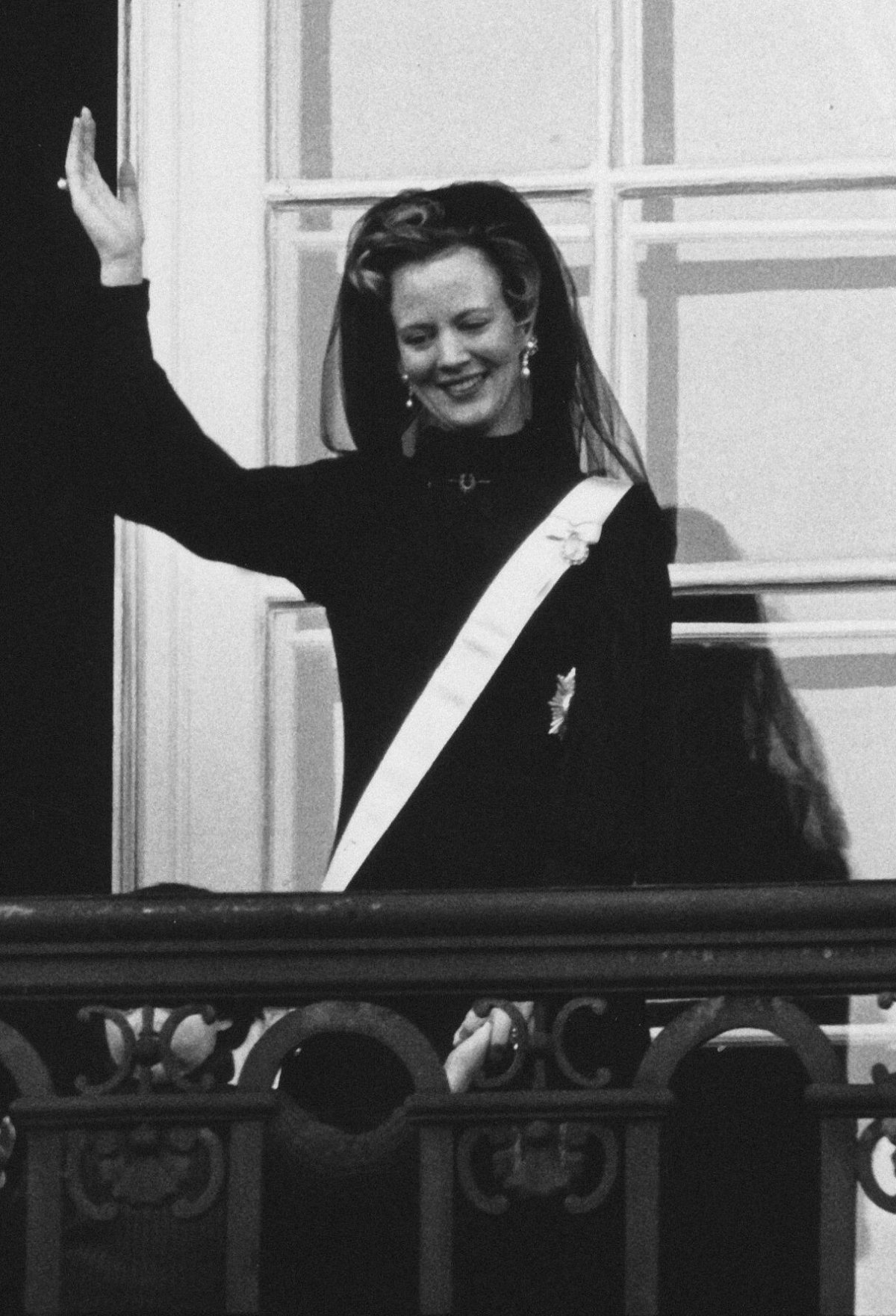
And here, she holds the hand of a third important person on the day: her three-year-old son, who had become Crown Prince of Denmark on his grandfather’s death. This weekend, we’ll see Margrethe and Frederik together once more on a proclamation day, as she hands over the throne to her son.
Leave a Reply
You must be logged in to post a comment.